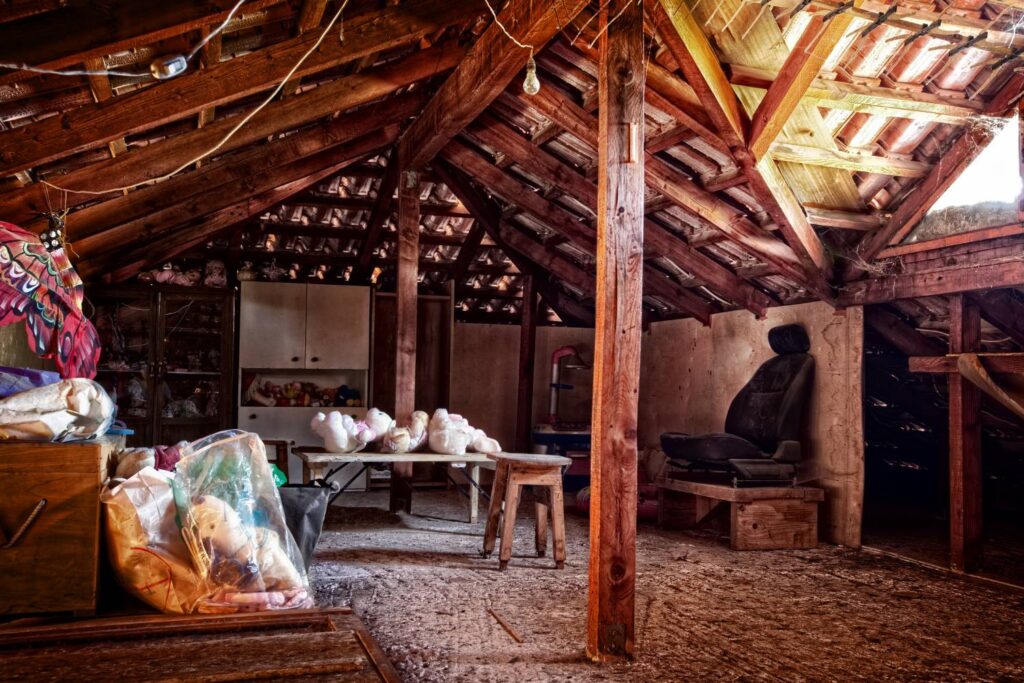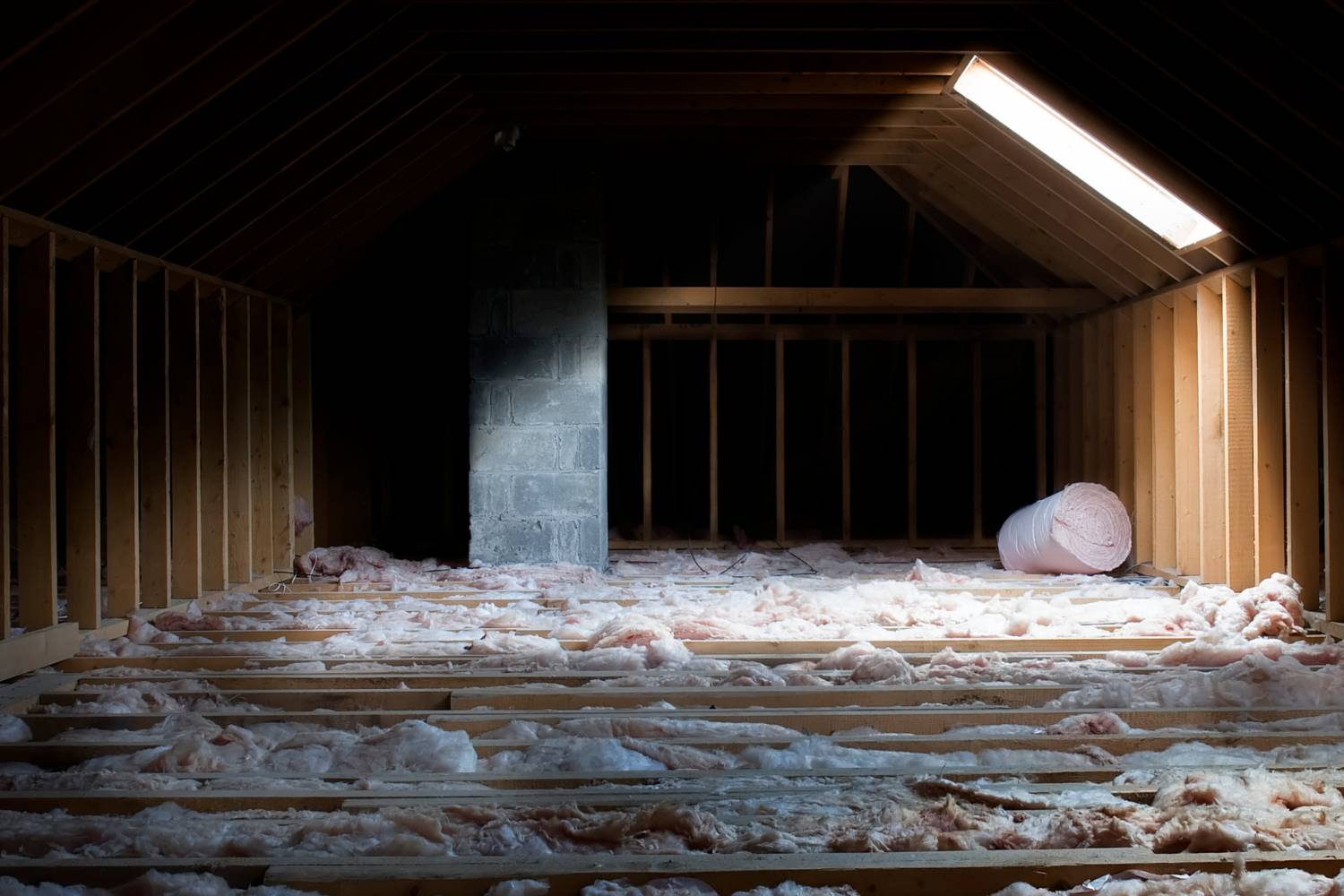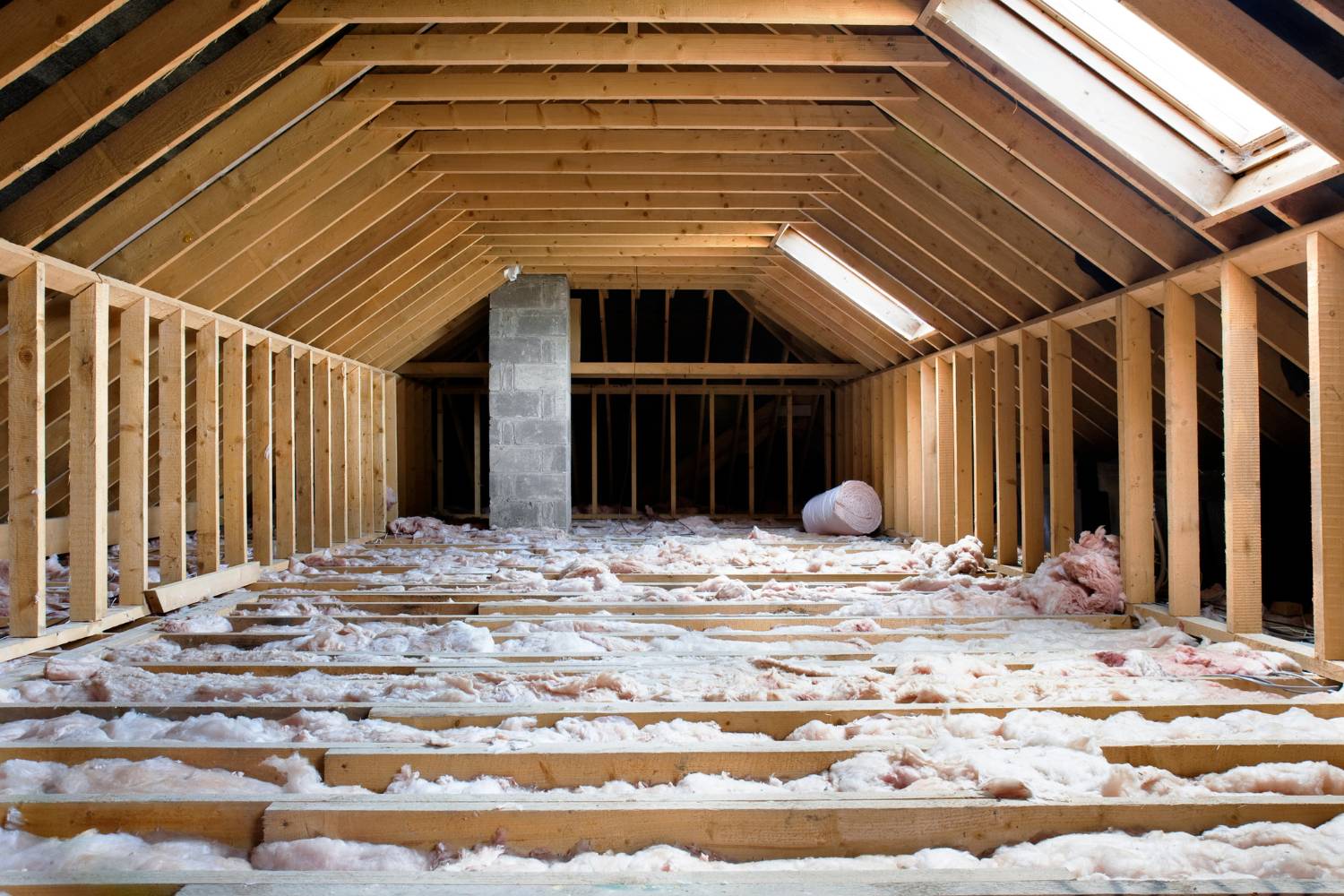Roof leaks are a common concern for homeowners, often manifesting as subtle issues that can lead to significant damage if left unaddressed. Understanding the signs and immediate effects of roof leaks in the attic is essential for maintaining your home's integrity and avoiding costly repairs.
This blog explores the various indicators of roof leaks, their immediate impacts, and effective preventive measures to safeguard your attic from water damage. By being proactive and informed, you can protect your home from the detrimental effects of roof leaks and ensure a dry, secure living environment.
Identifying Roof Leaks In The Attic
Roof leaks in the attic are a common issue that homeowners may encounter. These leaks can lead to severe damage if not addressed promptly. Detecting early signs of roof leaks and understanding their implications is crucial for maintaining the integrity of your home.
Signs of Roof Leaks in the Attic
High Humidity Levels
Excess humidity in the attic, often exceeding 50%, can be a sign of a roof leak. This condition promotes condensation and mould growth, potentially leading to significant damage to the roof and the attic's structural integrity. High humidity can cause wood rot and compromise insulation effectiveness, making it crucial to address any underlying moisture issues promptly.
Shiners
Shiners are roofing nails that have missed their intended target, the rafters, and can often be identified by frost accumulation on them during colder months. This frost indicates the presence of moisture, suggesting either poor installation practices or existing roof leaks. Addressing shiners is essential to prevent further moisture ingress and potential structural damage.
Staining or Discolouration
The appearance of dark or yellowish stains on the attic ceiling or walls is a clear indicator of water seepage. These stains, often accompanied by peeling paint or wallpaper, highlight a potential issue with the roof. It's important to investigate and repair the source of the leak to prevent further water damage and potential mould growth.
Musty Odours
A persistent musty smell in the attic is a sign of moisture accumulation, often due to water infiltration. This odour suggests that mould may already be present, which can pose health risks and damage the attic's structure. Identifying and eliminating the source of the moisture is crucial to mitigate these issues.
Mildew Smell
Similar to musty odours, the smell of mildew in the attic points to hidden leaks and damp conditions. These conditions are conducive to mould and mildew growth, which can damage building materials and impact indoor air quality. Addressing the moisture source and ensuring proper ventilation can help resolve these issues.
Water Stains
Brown or yellowish discolouration on the roof sheathing, rafters, or attic ceiling is a clear indication of water intrusion. These stains become more noticeable after rainfall, highlighting active leaks that need immediate attention. Repairing the leaks and replacing damaged materials are necessary to maintain the attic's integrity.
Wet Insulation
Damp insulation is a telltale sign of a roof leak. Wet insulation loses its effectiveness, reducing the attic's energy efficiency and potentially becoming a breeding ground for mould. Ensuring that insulation remains dry is essential for both energy efficiency and preventing mould-related health issues.
Damaged Shingles
Shingles that are cracked, buckled, missing, or show signs of granule loss can allow water to penetrate the roof, leading to leaks. Regularly inspecting and maintaining shingles is crucial to prevent water damage and extend the roof's lifespan.
Rusted Gutters
Rusted or damaged gutters fail to divert water away from the roof properly, leading to potential leaks. Ensuring that gutters are in good condition and free of blockages is important to protect the roof and the overall structure from water damage.
Ice Dams
Ice dams form at the edge of the roof due to poor attic insulation, indicating that heat is escaping from the attic. This heat escape can lead to roof leaks and other related problems. Improving attic insulation and ventilation can prevent ice dams and the associated risks.
Water Puddles
Pools of water in the attic are a clear sign of a severe roof leak that requires immediate attention. Addressing such leaks promptly is critical to prevent extensive water damage and ensure the safety and stability of the attic and roof structure.
Immediate Effects Of Roof Leaks On The Attic
Causes of Roof Leaks
Aging or Damaged Roofing Materials
Roofing materials like shingles and flashing are essential for maintaining a building's structural integrity and weatherproofing, but they deteriorate over time due to various factors. Prolonged exposure to sunlight, rain, snow, wind, and temperature fluctuations can cause these materials to become brittle, crack, or break.
Physical wear and tear from foot traffic, falling debris, and biological factors such as moss, algae, insects, and animals can also contribute to their degradation. Signs of aging or damage include curling or missing shingles, rusted or cracked flashing, water stains on ceilings, and a sagging roof deck.
Ignoring these issues can lead to leaks, mould growth, decreased energy efficiency, and structural damage. Regular inspections, timely repairs, and preventative maintenance are crucial to extending the life of a roof and avoiding costly repairs.
Poor Roof Installation
Poor roof installation can lead to a multitude of problems, primarily due to gaps and inadequate sealing. When a roof is not properly installed, it often leaves spaces between the roofing materials. These gaps are particularly problematic as they can allow water to infiltrate the attic during rain or snowmelt. The improper sealing compounds this issue, failing to provide a necessary barrier against moisture.
Over time, this water infiltration can lead to significant damage, including mould growth, wood rot, and compromised insulation. Ultimately, the consequences of poor roof installation extend beyond mere inconvenience, posing serious risks to the structural integrity of the home and potentially leading to costly repairs.
Clogged Gutters and Downspouts
Clogged gutters and downspouts can cause significant issues for homeowners, as debris such as leaves, twigs, and dirt can accumulate and obstruct the flow of water. When gutters are blocked, water is unable to drain properly and can overflow, leading to potential damage to the roof, walls, and foundation of the home. This overflow can result in leaks, mould growth, and even structural damage if not addressed promptly.
Therefore, proper gutter maintenance is crucial to prevent these problems. Regularly cleaning gutters and ensuring that downspouts are clear of obstructions can help maintain the integrity of the home's exterior and prevent costly repairs. Additionally, installing gutter guards or screens can reduce the amount of debris that enters the system, making maintenance easier and more effective.
Ice Dams
Ice dams form when melting snow on a roof refreezes at the eaves, creating a barrier that prevents subsequent snowmelt from draining off the roof. This phenomenon occurs due to the interaction between the heat from the house and the cold outside temperatures, causing the snow to melt and refreeze. As a result, water accumulates behind the ice dam, leading to a backup that forces water under the roof shingles and into the attic.
This can cause significant damage to the roof structure, insulation, and interior of the home, including water stains, mould growth, and weakened structural components. Proper insulation, ventilation, and roof maintenance are essential to prevent the formation of ice dams and protect the home from potential water damage.
Flashing Issues
Flashing issues in a building can lead to significant water entry problems if the flashing is damaged or improperly installed. Flashing is a critical component in sealing joints and transitions around key areas such as chimneys, vents, and other protrusions on the roof.
Its primary function is to prevent water from penetrating the building envelope at these vulnerable points. When flashing is compromised, either through physical damage or poor installation practices, it loses its ability to effectively channel water away from these joints.
Consequently, this can result in water leaks that may cause extensive damage to the building's structure, interior, and potentially even its foundation. Therefore, ensuring that flashing is correctly installed and maintained is essential for protecting a building from water damage.
Roof Penetrations
Roof penetrations, like skylights, vents, and chimneys, are potential leak points in roofing systems. Proper sealing and regular maintenance are crucial to prevent water infiltration. High-quality flashing and sealants should be used to ensure a watertight barrier, and regular inspections should be conducted to identify and address any wear or damage. This proactive approach helps protect the roof's integrity and prevents leaks that could damage the building's interior.
Immediate Effects of Roof Leaks
Structural Damage
When a roof begins to leak, the immediate effect on the structural integrity of the building can be severe. Water saturation directly impacts the attic's structural components, such as the rafters, joists, and beams. Over time, this continuous exposure to moisture can cause these wooden elements to weaken, warp, or rot, thereby compromising the stability of the entire roof system.
This degradation can lead to sagging ceilings, weakened roof decking, and, in extreme cases, potential collapse. Furthermore, the compromised structure may require extensive repairs or replacements, which can be costly and time-consuming.
Mould and Mildew Growth
Another critical effect of roof leaks is the rapid growth of mould and mildew, which thrive in moist environments. As water infiltrates the roof and attic spaces, it creates a perfect breeding ground for these fungi. Mould and mildew not only deteriorate the materials they grow on but also pose significant health risks to the occupants.
Exposure to mould can lead to respiratory problems, allergic reactions, and other health issues, especially for individuals with pre-existing conditions such as asthma or weakened immune systems. Additionally, mould remediation can be an expensive and invasive process, further increasing the overall damage caused by roof leaks.
Damaged Insulation
Roof leaks can severely damage the insulation within the attic or roof cavity. Insulation materials are designed to keep homes energy-efficient by maintaining desired indoor temperatures. However, when insulation becomes water-soaked, it loses its effectiveness, leading to decreased thermal resistance.
This reduction in energy efficiency results in higher heating and cooling costs as the HVAC system must work harder to maintain comfort levels. Damaged insulation not only increases utility bills but also reduces the overall comfort and liveability of the home, making immediate repair and replacement necessary to restore energy efficiency.
Electrical Hazards
Water intrusion from roof leaks poses significant electrical hazards. As water makes its way through the roof, it can come into contact with electrical components such as wiring, junction boxes, and outlets. This contact increases the risk of short circuits, which can damage electrical appliances and systems.
More critically, the combination of water and electricity poses a severe safety risk, with the potential for electrical fires or electrocution. These hazards necessitate urgent attention to prevent possible injury or property damage. Ensuring that electrical systems are inspected and repaired by professionals is crucial to maintaining a safe living environment after a roof leak occurs.
Temporary Measures to Mitigate Damage
Using Tarps and Temporary Patches
Cover affected areas with waterproof tarps to prevent further water infiltration. Secure tarps with ropes or bungee cords to ensure they stay in place, especially in windy conditions. This quick action helps reduce immediate damage and buys time for permanent repairs.
Clearing Debris from Gutters and Downspouts
Regularly inspect and clear debris from gutters and downspouts to ensure proper drainage. This prevents overflow, which can cause damage to the roof, walls, and foundation. Keeping these areas clear maintains effective water management and reduces the risk of damage.
Ensuring Proper Attic Ventilation and Insulation
Ensure attic vents are clear and address any insulation issues to prevent moisture buildup and improve energy efficiency. Proper ventilation and insulation help maintain structural integrity and reduce the risk of mould, mildew, and energy loss.
Taking Immediate Action
Immediately document damage for insurance claims and move valuable belongings away from affected areas. Place buckets to collect dripping water, managing leaks temporarily to prevent further damage. Quick action minimises the overall impact on the home and its contents.
Preventing Roof Leaks In Attic For the Future
Preventing roof leaks in the attic is crucial for maintaining the structural integrity of your home and avoiding costly repairs. This proactive approach involves several key steps that, when implemented consistently, can significantly reduce the risk of water damage. By focusing on regular inspections, maintenance, and specific preventive measures, homeowners can protect their attics from leaks and ensure their homes remain safe and dry.
Regular Roof Inspections and Maintenance
Scheduling regular roof inspections and maintenance is essential in preventing roof leaks. It is recommended to have your roof inspected at least once a year, preferably before the rainy season.
During these inspections, a professional can identify and address minor issues such as damaged shingles, cracked flashing, or loose tiles, which, if left unattended, could develop into major leaks. Promptly fixing these minor problems helps extend the life of the roof and prevents the need for more extensive and expensive repairs in the future.
Cleaning Gutters and Downspouts
Cleaning gutters and downspouts is a crucial task that ensures proper water drainage from the roof. Debris, such as leaves, twigs, and dirt, can accumulate in gutters, causing blockages that lead to water overflow.
This overflow can seep into the attic, causing leaks and water damage. Regularly cleaning gutters and downspouts, especially during the fall and spring, prevents these blockages and ensures that rainwater is directed away from the roof and foundation, reducing the risk of leaks and structural damage.
Trimming Overhanging Tree Branches
Trimming overhanging tree branches is an important preventive measure to minimise the risk of roof damage during storms. Branches that hang over the roof can break off during strong winds or heavy snowfall, causing significant damage to shingles and other roofing materials.
Additionally, overhanging branches provide a pathway for animals to access the roof, potentially leading to further damage. Regularly trimming these branches not only protects the roof from physical damage but also reduces the accumulation of debris, such as leaves and twigs, which can clog gutters and downspouts.
Monitoring Attic Ventilation and Insulation
Monitoring attic ventilation and insulation is essential for maintaining a healthy and leak-free attic. Adequate ventilation ensures proper air circulation, which helps regulate temperature and moisture levels in the attic. Poor ventilation can lead to excessive heat and moisture buildup, causing condensation and potential water damage.
Proper insulation, on the other hand, prevents heat loss and maintains a consistent temperature, reducing the risk of ice dams on the roof during winter. By regularly checking and addressing any issues with ventilation and insulation, homeowners can prevent conditions that might lead to roof leaks and ensure a more energy-efficient home.
Conclusion
Roof leaks can have a profound impact on your attic, leading to structural damage, mould growth, and other costly issues if not promptly addressed. By recognising the early signs of leaks—such as high humidity, staining, and musty odours—you can take immediate steps to mitigate damage and protect your home.
Implementing preventive measures, such as regular roof inspections, cleaning gutters, and ensuring proper attic ventilation, is essential for maintaining the integrity of your roof and attic. Additionally, being proactive about trimming overhanging branches and monitoring insulation can further safeguard your home against leaks.
Understanding and addressing roof leaks is crucial for maintaining a dry and secure living environment. By staying vigilant and taking preventive actions, you can protect your attic from water damage and avoid costly repairs, ensuring your home remains a safe and comfortable place for years to come.
Frequently Asked Questions
Yes, roof leaks can lead to moisture buildup in your attic, creating an ideal environment for mould and mildew growth. This can affect the air quality in your home and cause health issues.
Roof leaks can saturate your attic insulation, reducing its effectiveness. Wet insulation loses its ability to retain heat, which can increase your energy bills and make your home less comfortable.
Persistent roof leaks can lead to wood rot and weaken the structural integrity of your attic. This can cause damage to the rafters, beams, and ceiling, potentially leading to costly repairs.
Yes, moisture from roof leaks can attract pests such as rodents, insects, and termites. These pests can cause further damage to your attic's structure and insulation.
Regular inspections of your attic for signs of moisture, mould, water stains, and damaged insulation can help detect roof leaks early. Look for discolouration on the ceiling and walls, as well as any musty odours. Promptly addressing any issues can prevent major damage.


